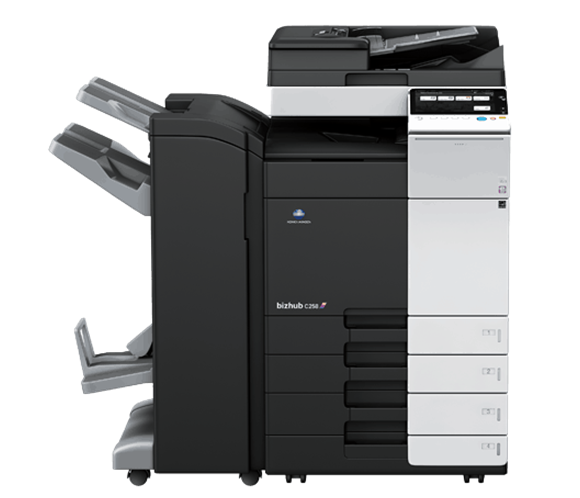13 Things You Didn’t Know About Photocopiers

Together with the water-cooler, the telephone, and the desktop the photocopier is the most common piece of office equipment everywhere. You most likely don’t think there’re a lot of things about the photocopier that could shock you and, to be frank, you’re maybe right. Yet there’re still one or two fascinating facts that may just take you by surprise.
Here are some things you probably didn’t know about your office-photocopying machine:
1. Staple and Hole Punch Documents
If your institution or workplace still requires you to hole punch or staple your own documents, you’re missing out on useful efficiency-improving state-of-the-art technology.
Modern-day photocopiers can staple documents themselves, using automatic processes to make the subsequent documents hardwearing and giving them a professional look.
2. Track Costs
Copy toner and paper can be one of the most important sources of spending in any office. These machines on a daily basis produce countless pages of documents, which is both expensive and bad for the environment.
Your office copy machine makes it easy to track individual, departmental and company-printing patterns to find out exactly how much is being spent on printing. This helps cut costs and measure inefficiencies.
3. Fold Documents from Your Photocopier
If you’ve ever attempted to make a simple, image-heavy flyer for your business, you know that folding a lot of individual papers gets boring very fast. Much worse, it is difficult to maintain the same quality when folding the pages yourself.
Finishing modules can fold papers in different ways, using repeatable, automated actions to produce flawlessly consistent folds.
4. Better Document Security
Nowadays, photocopiers can encrypt documents that are scanned and backed up on your network.
Other great security features comprise the use of proximity cards, login photos, and individual PIN codes. These advanced security features restrict access and usage to workflows and documents on the photocopier panel itself.
5. Create Mail-Ready Envelopes
You don’t need an envelope printer to create lots of mail-ready envelopes. Multifunction copy machines with the capability of printing envelopes can also print images directly onto the envelopes, as well as address info that differs from envelope to envelop.
This saves a lot time out of the process of starting a direct mail campaign, either for institutional or marketing purposes.
6. You Can’t Duplicate Money on a Modern Color Copier
Rookie money-launderers beware! If you are considering using your office’s MFD to copy money, reconsider. Modern-day photocopiers come equipped with a feature that recognizes an embedded pattern in money.
It then marks all copies rendering them unusable. So, even if you in some way succeed to get your hands on the rare government paper needed, starting your own cash factory during your lunch break is off.
7. Sitting on Your Copy Machine is a Bad Idea
Twenty percent of all photocopier maintenances are required as a result of damage caused by someone sitting on them and putting far too much pressure on the glass. Always stay out of the photocopier room when the drink starts flowing in your workplace.
8. Scan Hard Copy Documents to Make Editable Electronic Documents
How many times have you retyped a document to make some adjusts since it is only obtainable in paper format? Well, this can be such a waste of precious time. Worst of all, your PC crashed and the document wasn’t saved, and now it is lost forever, except for the hard copy on your desk.
It is as simple as scanning your hard copy into the office photocopier directly into PDF or Microsoft Word.
9. Integrate with Cloud, Email and Mobile Services
Office technology is quickly changing to a paperless environment. Part of that change includes taking paper documents and converting them into digital ones. In order to do this, modern-day copiers integrate with networks to receive and send documents through the Internet.
Now, you can scan editable images of docs to mail, and still convert them to editable word documents and PDFs. You can print documents and images from your smartphone, or make physical copies of digital documents located on a cloud-based platform such as Google Docs.
10. Chronic Arthritis Inspired the Invention of the Photocopier
Chester Carlson invented the photocopying machine back in 1938. He was driven to research the process after spending years as a patent attorney and law student, re-writing legal documents manually.
His chronic arthritis made his work as law student and patent attorney unbearable. Additionally, when Carlson first started presenting his invention around the big hardware companies of the day he was turned down. Carlson later shared his idea with the non-profit Battelle Memorial Institute, who helped him research the technology.
11. Copy Machines Were Once a Serious Fire Hazard
Xerox 914, the first popular photocopying machine, took the business world by a storm in the 50s. Crazily enough, if it were released today, it would never get past safety and health.
Not only did over-use of the machine risk overheating, the machine would usually burst into flames after printing too many copies. This was such a huge problem that Xerox had to give out free fire extinguishers with each photocopying machine they sold!
12. Copiers have a Good Memory
More than fifty percent of used photocopiers contain info that has been left by previous owners. So, when you take into account the amount of highly sensitive info circulating in the office on a daily basis, the danger should quickly become clear to you.
Selling your old office photocopier? Remember to wipe out all images and files from its memory.
13. Renting a Copier is More Economical Compared to Buying one Outright
For most startups purchasing invaluable office equipment such as a photocopier may be a scary investment, mostly as a result of the probability of it becoming obsolete and the huge capital outlay. Leasing or renting a copier is the smart option with an abundance of good business-sense advantages.
However, If you make less than seven hundred copies a month, you maybe don’t need to rent photocopiers for your business. You would be better off purchasing small desktop printers.
Conclusion
Copy machines are designed with state-of-the-art technology that sometimes goes completely ignored and unused. Creating the time to learn what your copier is capable of can change the way you do everyday tasks and save you a considerable amount of time.

